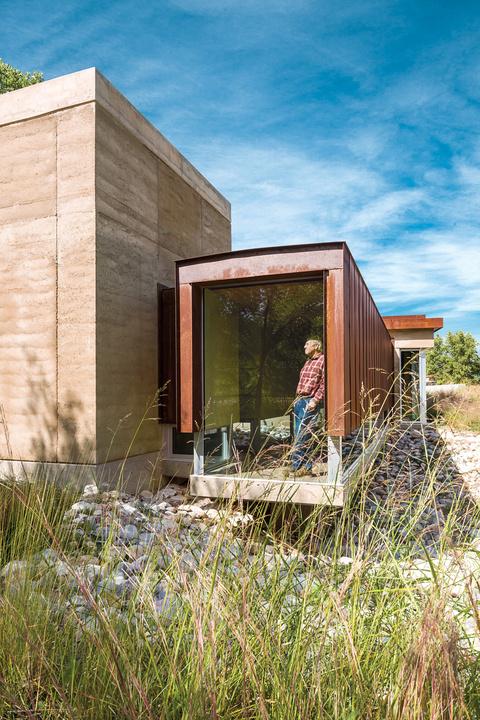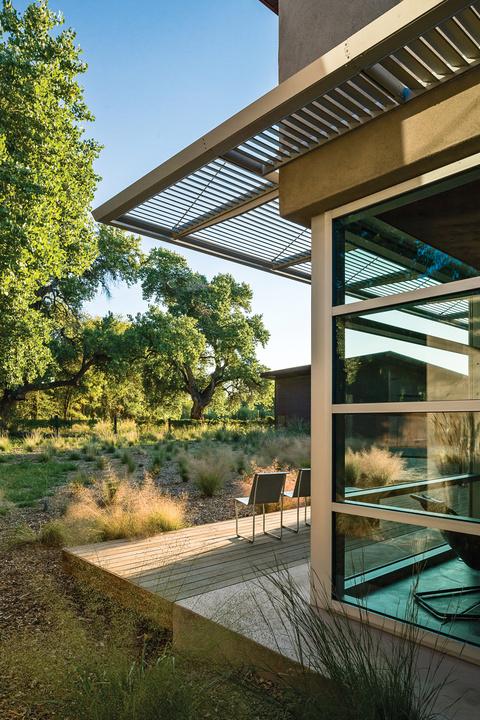
Governed by Roger Downey's strict mandate for minimalism, architect Efthimios Maniatis was able to craft eco-friendly features around the thermal properties of the rammed-earth walls.
Roger and Mary Downey’s 3,200-square-foot rammed-earth home seems to float next to the forest along the Rio Grande in semirural Corrales, New Mexico. While the home’s design and materials nod to the neighboring adobe farmhouses and agricultural sheds, architect Efthimios Maniatis of Studio eM Design calls them an amalgam of “modern contemporary regionalism,” governed by Roger’s strict mandate for minimalism. Within that aesthetic, Maniatis packaged eco-friendly features around the thermal properties of the rammed-earth walls. Builders make these walls by mixing dirt with ten percent Portland cement and six to ten percent water, then pouring and compacting the mud into wood forms in eight-inch “lifts.” Subtly varying color and texture mark these lovely strata. “The colors change all day with the light,” says the architect. He also points out the material’s tactility: “Everyone goes to the rammed earth and feels it. It’s like having a cat—you can touch it all day long.”
Outer Space
Studio eM Design countered the harsh climate of the New Mexico desert with a passive solar design that blocks heat and sun while maximizing natural daylight. Marrying the interior with the outdoors informed the design, as did the concept of subtraction: “If you do it with two, then you can do it with one,” Maniatis says, articulating Roger’s algebra of minimalism.

One major directive was to “honor the tree,” referring to a particular 85-year-old cottonwood on the property.
Dust to Dust
Another key move was a nod to traditional adobe architecture. And since the owners are “all about impermanence,” the home’s natural materials were a crucial design element. Mixed with a small percentage of Portland cement (a natural, nontoxic version), the earthen walls could someday foreseeably “melt back into the river,” says the architect.
Cottonwood Bible
Roger, who retired from the insurance business he started in 1975 and now raises racing mules, and Mary, a former Catholic nun now involved with the Albuquerque Buddhist community, gave Studio eM general design parameters of “glass, openness, simplicity.” One major directive was to “honor the tree,” referring to a particular 85-year-old cottonwood on the property.
Runoff Election
Landscape architect Judith Wong restored the acre lot to its natural state: riverside meadow. A hidden, gravity-fed, water-harvesting system of gutters and underground plumbing distributes all roof runoff to the grasses surrounding the home.
Thermal Underwear
High heat capacity in the rammed-earth walls (which are from 18- to 36-inches thick) regulates interior temperatures. In winter, the walls work with the slab to retain and radiate the sun’s heat into the home overnight, meaning the gas-fired, in-floor radiant heat is seldom used. Conversely, because the night air cools the walls in summer, the home has no air-conditioning—though daily highs often rise into the mid-90s and above. In an architectural sleight of hand, the building—despite its massive walls—seems to hover over a hidden foundation.
